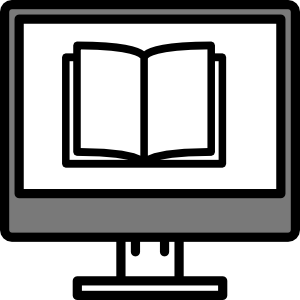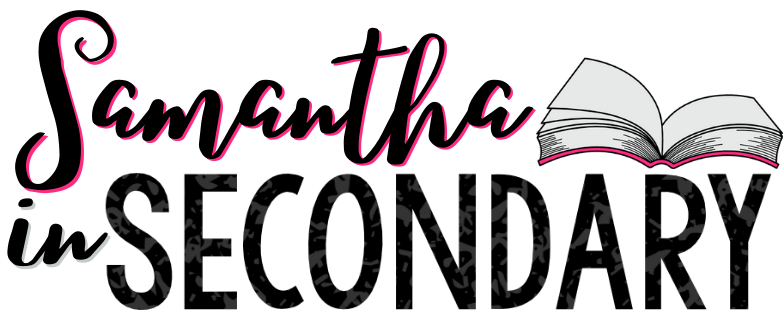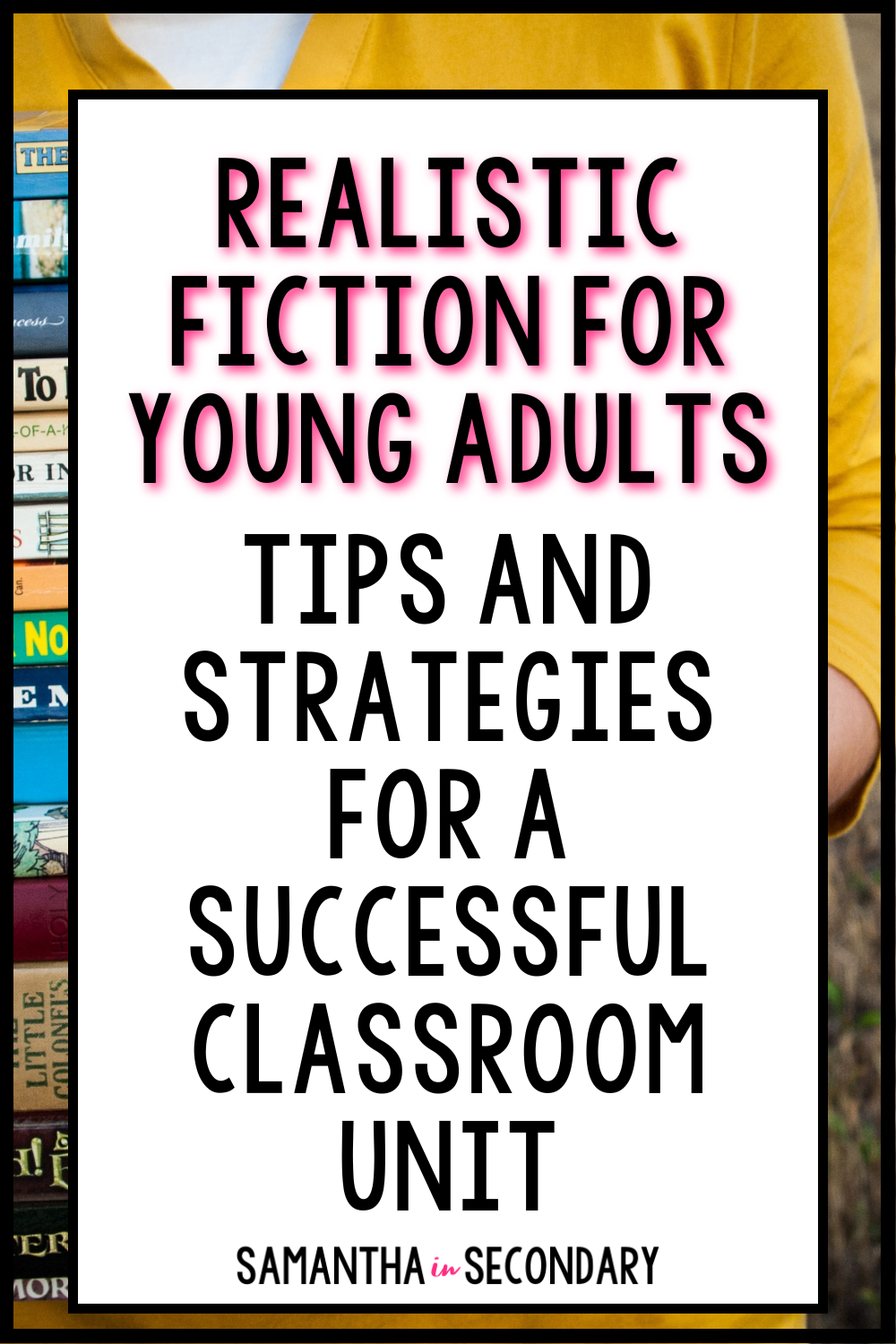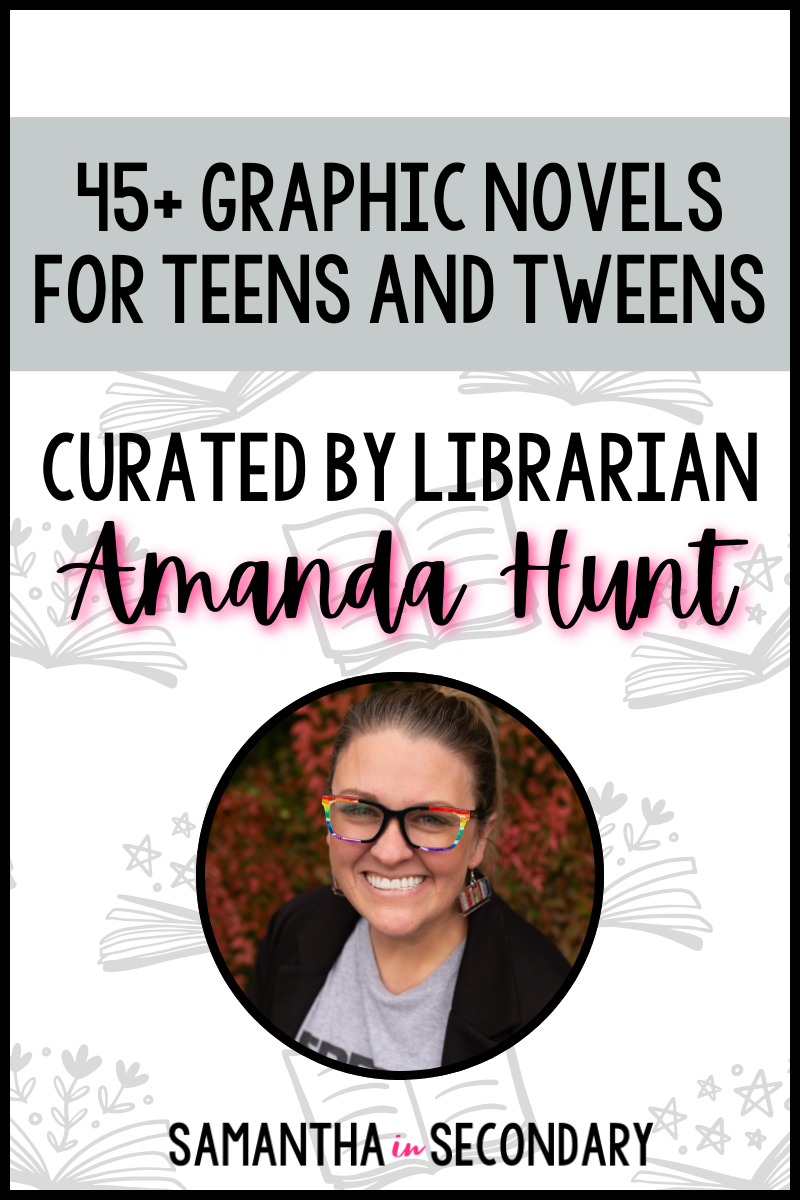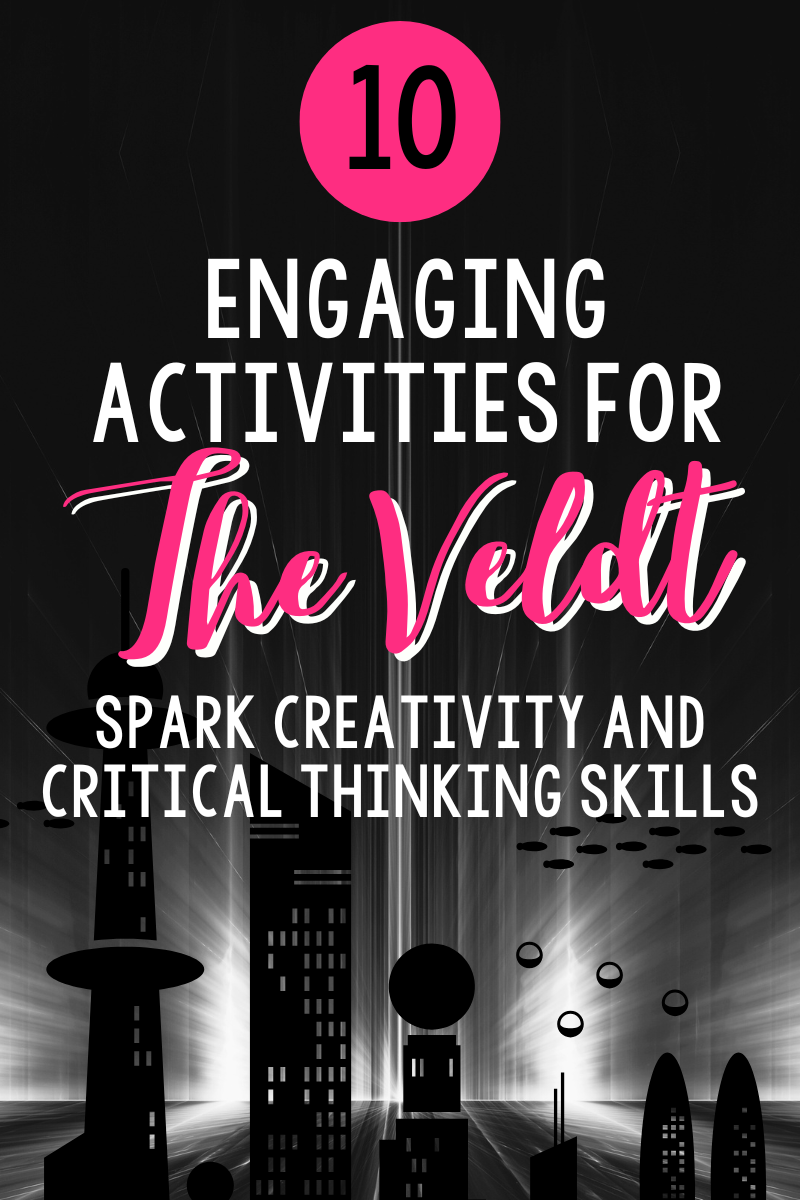Bring your students on a literary field trip as an end of the year review activity for your secondary English Language Arts students. This is a unique and engaging end of year review activity that can be used with any set of texts.
This post will cover what you need to know for implementing a literary field trip within your end of the year activities in secondary ELA. Read on for information, tips, and links to helpful resources.
What is a literary field trip?
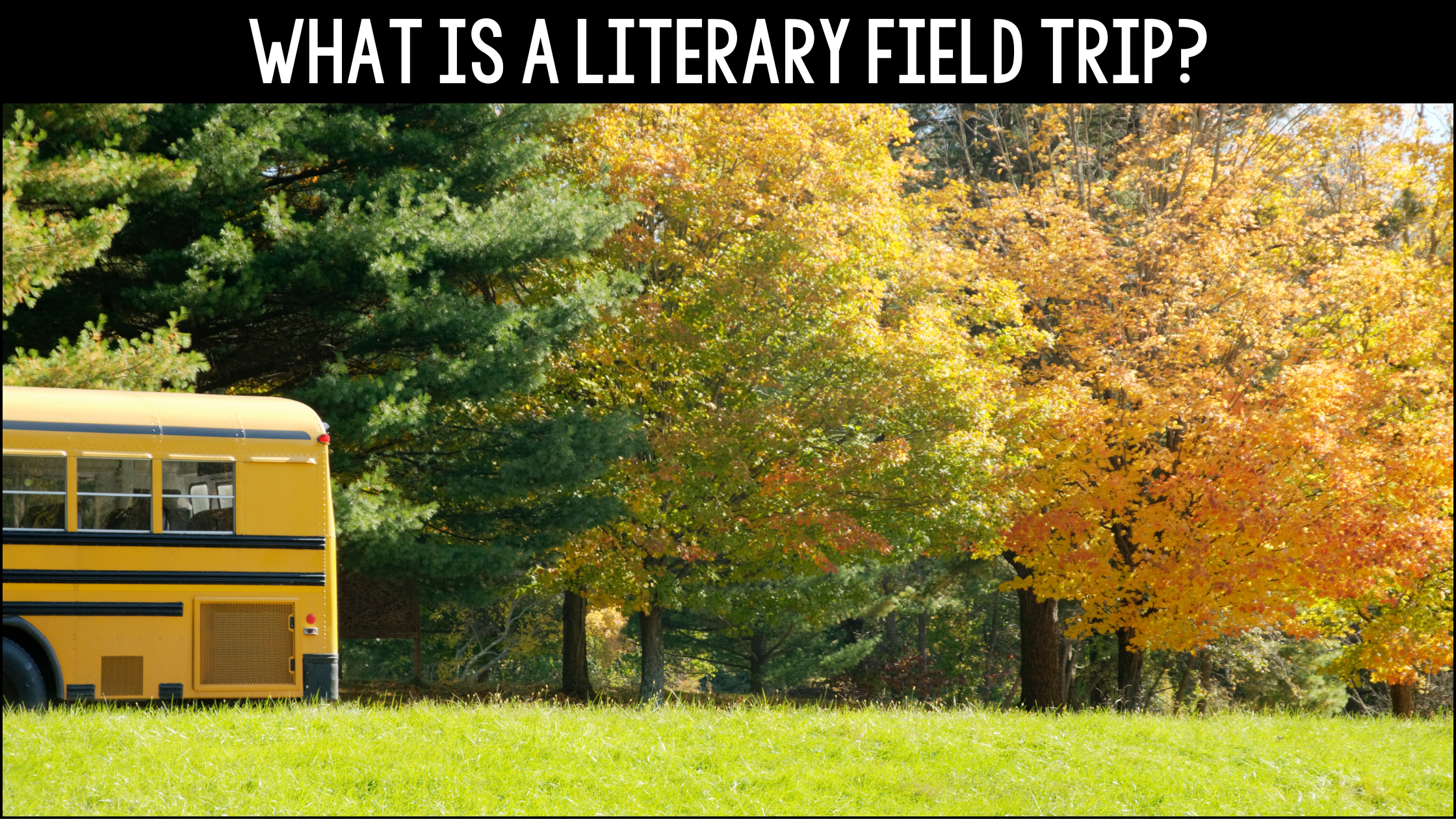
A literary field trip is an engaging activity that helps students delve into different places studied throughout texts using a unique boarding pass and flight template. Students will help plan a trip to “travel” to settings studied throughout a designated time period and plan specific stops connected to the text. It’s a fun and creative way to review or assess knowledge.
Why use a literary field trip?
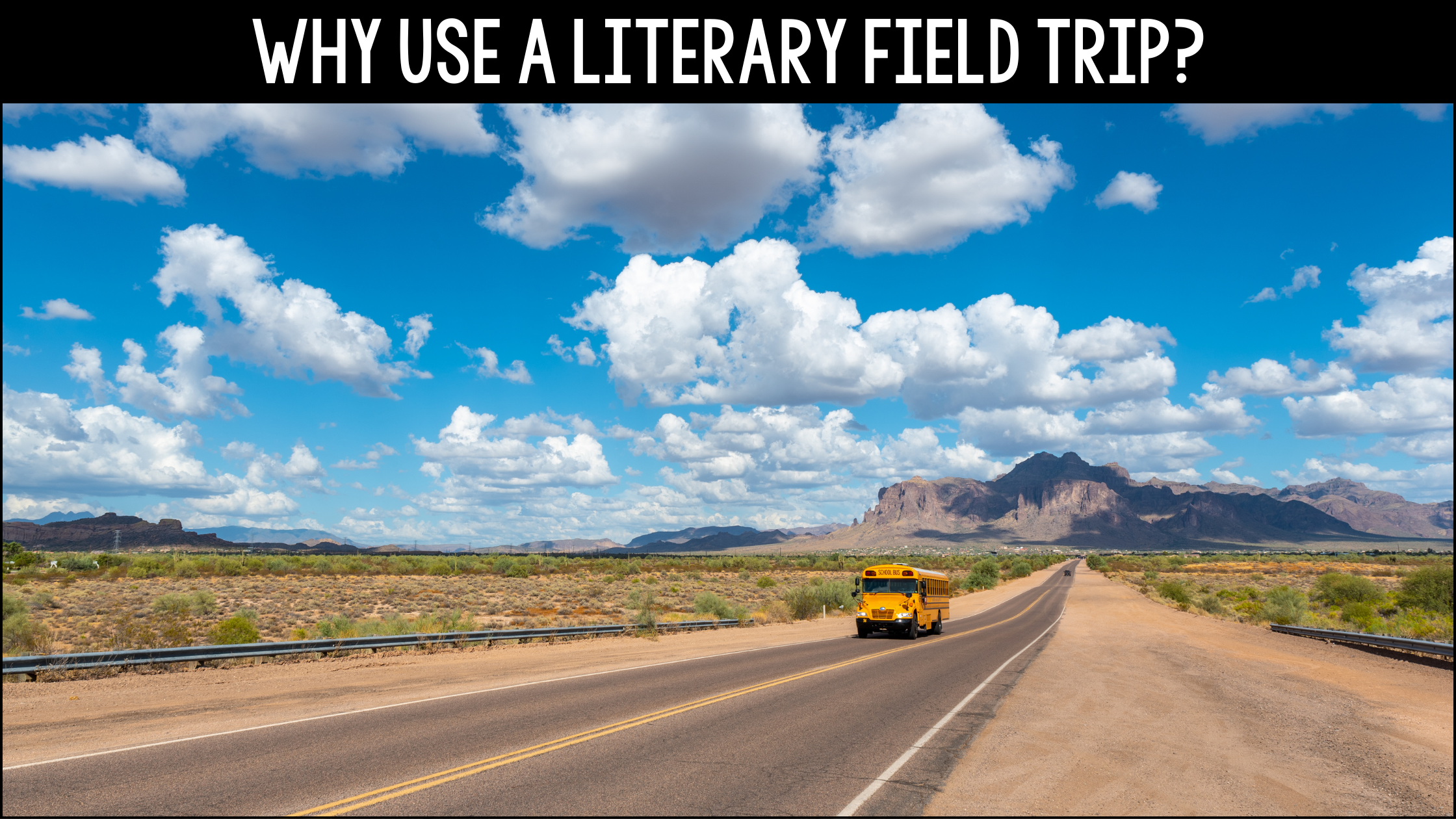
This end-of-the-year activity transforms setting exploration into an engaging journey. It encourages students to think critically about the details of texts studied in class. Students connect to the text’s settings and further explore the setting by creating a simple itinerary for their field trip. Incorporating travel planning creates an innovative and interactive activity that brings settings to life.
How to use a literary field trip
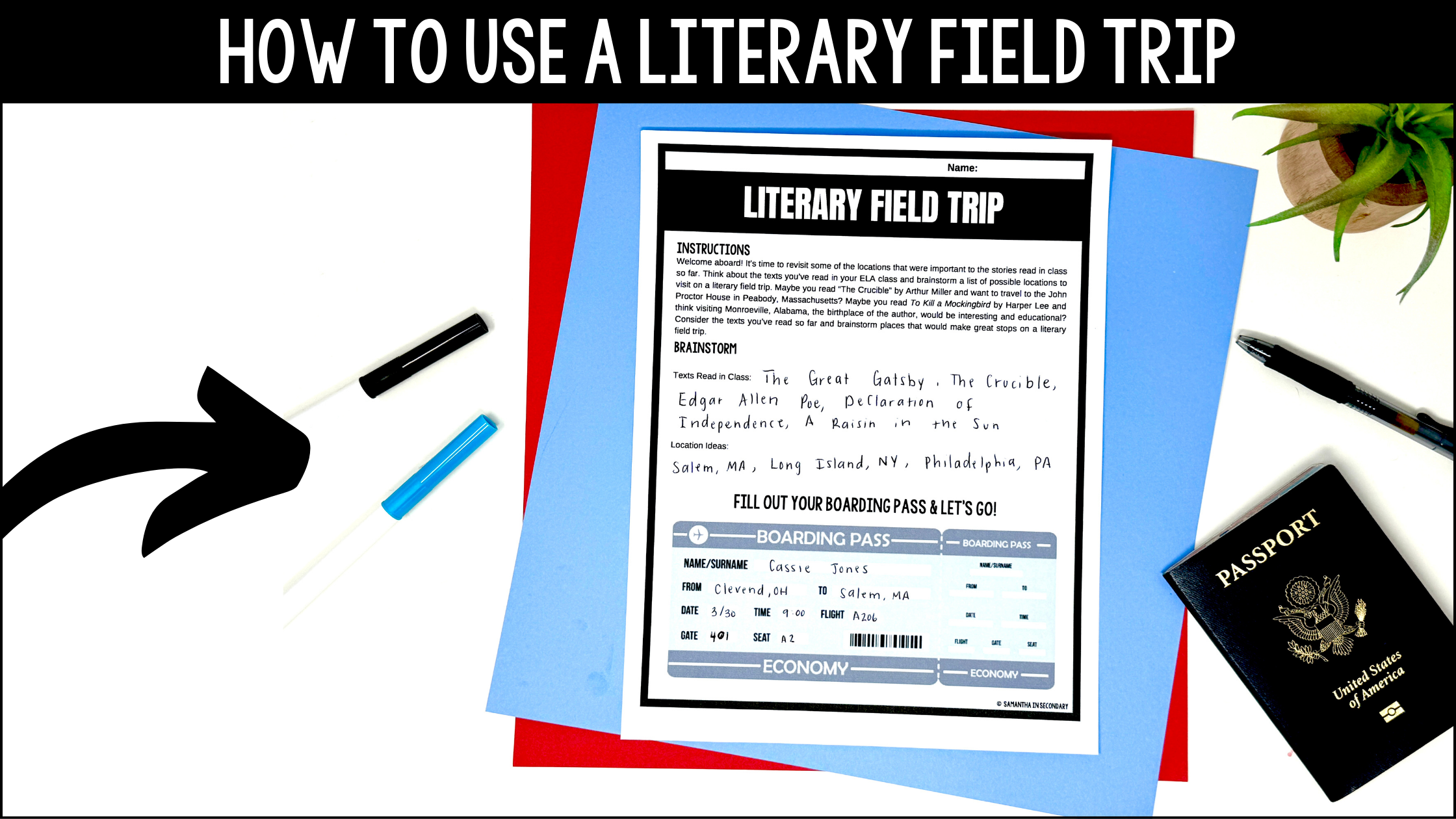
The literary field trip is already an innovative project for the end of the year. You can adjust this project in whatever way that will fit your class and culture. Read on for some suggestions.
First, you’ll need to decide if you prefer students to work independently or in small groups for this activity. While this project is great in terms of simplicity to implement, I don’t suggest making this a large-group project. Take time to review the parameters of the project with students, and then prepare students for brainstorming.
The brainstorming portion of this activity is important, especially if you allow students to select text from any point in the school year. You may need to remind students of all the options they have at their disposal. Have students independently jot down what they can remember or what stuck out. Students can then meet in their small-groups or collectively discuss as a class what some favorite texts were.
Students should then make their final selections. You must ensure that your students have access to technology and materials in order to adequately research the settings they have chosen. As they complete their research, they should fill out an organizer of some sort to keep track of their information. You’ll find links to premade resources further along in this blog. Organizers will help students keep track of the most important information from their research. It will also remind them of key details they should include in their travel planning. If you choose to have students work in a small group, I suggest each student plans their own “leg” or have designated jobs to research. For example, one student might plan the food, one sight-seeing, and another the activities in that location.
After jotting down notes for each location, students should create postcards for each location. A simple template allows students to design their postcard and write a short message to summarize their itinerary. This is a great opportunity to have students practice summarizing skills with the confines of a postcard to discuss the highlights of the trip. Small groups is just one way you can differentiate for students who may struggle with this skill. Students can work together to discuss the best way to summarize the information. Students will then present their literary field trips.
As an extension idea, you can increase how many stops students must take. You can also require specific parameters. Consider being able to travel to these locations within a 2 week window, or the trip including activities to fill 2 days in each location. You can also have a creative twist and include fictional locations. Your presentations can also be done by student or group or by location. You can sort postcards in a variety of ways and even choose a gallery walk in lieu of a more formal end-of-the-year presentation.
Done-for-you literary field trip resource
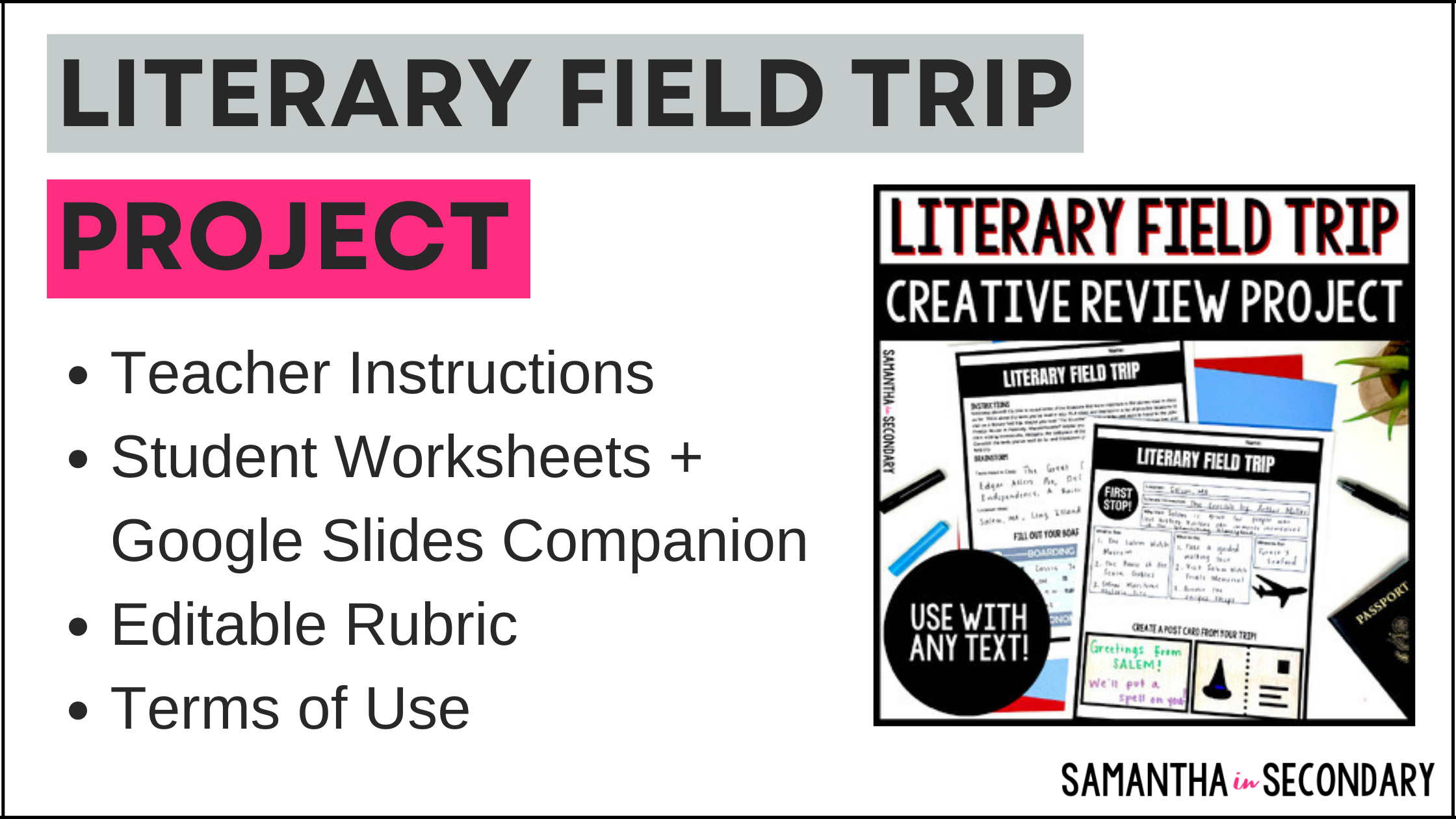
If you’d like to use my specific project complete with templates, instructions, and rubric, you can find it here in my TPT shop. It’s ready to print and use right now! You can also pop it into your Google Classroom if you prefer a paperless option.
This literary field trip is such a fun end of the year ELA project. Utilizing this ELA review will allow students to research places relevant to texts read in class, as well as present their creative ideas and information. It allows your students to focus more intently on the literary element of setting. Using a literary field trip also gives you a flexible end of the year activity that is not only fun, but also develops research abilities in an engaging way.
If you’d like to see more tips on end of the year activities, English language project ideas, engaging activities, and motivating strategies, follow me on Facebook or Instagram. You can also find more resources and activities in my shop.
I’d love to know what you think of the literary field trip activity! What other activities do you use at the end of the year for your secondary ELA students? I look forward to seeing your great ideas in the comments below or in my socials. I invite you to join the conversation!
Happy teaching!



